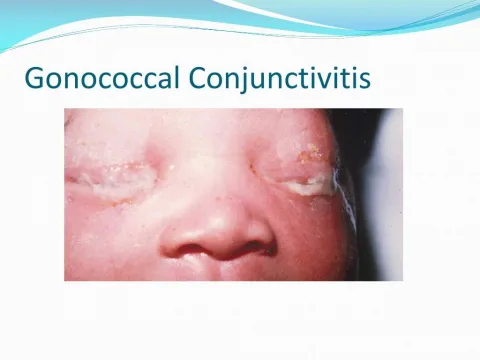In recent months, a Salmonella outbreak linked to pet geckos has raised health concerns across the United States. The Centers for Disease Control and Prevention (CDC) has reported a significant increase in infections, with 49 individuals across 27 states now affected. Most notably, two serotypes of the bacteria, Salmonella Muenchen and S Lome, have been identified as responsible for these infections. As the outbreak continues to unfold, pet gecko owners are urged to remain vigilant about hygiene practices to prevent Salmonella gecko infection and associated illnesses. The increase in cases highlights the importance of understanding pet geckos and their potential to harbor harmful bacteria, particularly for vulnerable populations like children under 5 years old.
The ongoing health crisis involving reptilian pets, particularly geckos, has caught the attention of health officials and pet enthusiasts alike. Various species of these colorful creatures have been implicated in cases of salmonellosis, illuminating the risks of gecko-associated illnesses. As the CDC’s updates reveal a spike in reported Salmonella incidents, it is crucial to explore safe handling practices to mitigate the risks. Awareness surrounding Salmonella infections associated with reptiles—especially those kept as pets—is vital for safeguarding both owners and their families. Understanding the complexities of these outbreaks can help prevent similar occurrences in the future.
Understanding the Salmonella Outbreak Linked to Pet Geckos
The recent Salmonella outbreak associated with pet geckos has raised public health concerns, particularly regarding the bacterial infections linked to these exotic pets. According to the CDC, a notable increase in infections includes both Salmonella Muenchen and Salmonella Lome, with the total number of reported cases now reaching 49 across 27 states. This surge highlights the need for pet owners to be vigilant about hygiene and handling practices, particularly when interacting with geckos. Individuals who have recently purchased these reptiles should be aware of the risks and encouraged to monitor for any symptoms of infection.
Salmonella gecko infection can manifest with a range of symptoms, including diarrhea, fever, and abdominal cramps, often affecting children under 5 years old who are particularly vulnerable to its effects. In examining the data collected by the CDC, researchers found that a significant portion of those affected had direct contact with their pet geckos. The Centers for Disease Control and Prevention has emphasized the importance of public awareness surrounding gecko-associated illnesses and the necessity of stringent hygiene practices to reduce the risk of infection.
Safety Measures for Gecko Owners in Light of CDC Warnings
In response to the ongoing Salmonella outbreak geckos, the CDC has outlined several critical safety measures for pet owners. Firstly, it is crucial for gecko owners to implement thorough handwashing procedures after any interaction with their pet or its environment. This action significantly reduces the chance of transferring harmful bacteria from geckos, which may not show any signs of illness themselves, to humans. Additionally, the CDC advises against housing geckos in kitchens or food preparation areas to minimize contamination risks.
Furthermore, keeping geckos away from children, especially those under five years old, is essential, as this age group is at a heightened risk for developing severe complications from Salmonella infections. Encouraging safe habits among pet owners, such as regularly cleaning the gecko’s habitat and being mindful of where the pet is allowed to roam within the home, can help curb the spread of gecko-associated illnesses. As more information emerges about the sources of these infections, pet gecko owners are urged to stay informed and take proactive steps to protect themselves and their families.
The Importance of Monitoring Salmonella in Exotic Pets
Monitoring Salmonella in exotic pets, particularly geckos, is becoming increasingly important as outbreaks occur. The unique nature of these animals as household pets means that many owners may not be aware of the risks they present. The CDC has found that this outbreak echoes previous incidents, such as the outbreak in 2015 that was also linked to pet geckos. Such recurring incidents emphasize the need for ongoing surveillance and education regarding safe pet ownership practices.
Veterinarians and pet retailers should play an active role in informing potential gecko owners about the risks of Salmonella and the best practices for care. Regular health checks for geckos, along with responsible sourcing from reputable suppliers, can mitigate these risks. As science progresses, more effective methods for detecting Salmonella in gecko populations may be developed, supporting efforts to prevent future outbreaks.
Tracking Infectious Diseases from Reptiles
The ongoing investigation into the current gecko-associated Salmonella outbreak highlights the critical importance of tracking infectious diseases that can spread from reptiles to humans. Reptiles are often carriers of Salmonella bacteria, which can persist in their environment without negatively impacting the animals. This characteristic poses significant challenges for public health, as symptoms may not be evident in the geckos themselves, thus complicating the identification of the source in an outbreak.
The CDC’s efforts to genetically trace Salmonella Muenchen and Lome strains back to various vendors not only assists in managing the current outbreak but also serves to improve future response strategies. By enhancing the understanding of how these pathogens spread, health officials can better inform pet owners about safe practices and potentially implement stricter regulations on reptile sales in the market. Collaborative efforts among pet retailers, health departments, and the public are vital in addressing the risks and ensuring safer environments for all.
Best Practices for Handling Pet Geckos to Prevent Salmonella
To minimize the risks of Salmonella infections from pet geckos, owners should adopt best practices for handling and caring for their reptiles. Firstly, it is essential to wash hands thoroughly with soap and water after holding geckos or cleaning their habitats. This action significantly limits the potential transfer of harmful bacteria to humans, especially for individuals who may not exhibit any symptoms in their pets.
Moreover, gecko owners should be cautious about where they allow their pets to roam. Keeping geckos out of food preparation areas reduces the likelihood of cross-contamination, which can occur even with innocent touches. Educating family members, particularly children, about the importance of these practices can effectively reduce the incidence of gecko-associated illnesses, thereby fostering a responsible pet ownership culture that prioritizes health.
Identifying Symptoms of Salmonella Infection in Humans
Awareness of the symptoms of Salmonella infection is crucial for pet gecko owners and the general public, especially as it relates to the current outbreak. Common symptoms of Salmonella infection include diarrhea, fever, and abdominal cramps, usually developing six hours to six days after exposure to the bacteria. In severe cases, the infection can lead to hospitalization, particularly among vulnerable populations such as young children and individuals with weakened immune systems.
Recognizing these symptoms early on can greatly influence the treatment process and prevent complications. The CDC encourages those who interact with geckos to seek medical attention if they experience any of these symptoms after handling their pets. Understanding the link between pet interactions and such infections is a crucial step in mitigating the outbreak and safeguarding public health.
Historical Context of Geckos and Salmonella Outbreaks
Gecko-associated illnesses and Salmonella outbreaks are not a new phenomenon. Historical data has highlighted several instances where pet reptiles have been linked to Salmonella infections, raising concerns among health officials. A notable prior outbreak in 2015 involved multiple states and highlighted the challenges of managing public health risks posed by exotic pets. With the resurgence of cases in 2023, it becomes imperative to study past outbreaks to implement more effective control measures.
Tracking the epidemiology of these outbreaks provides valuable insights into transmission pathways and the identification of risk factors associated with reptile handling. This knowledge is indispensable not only for mitigating the current outbreak of Salmonella Muenchen and Lome but also for preventing future incidents through improved pet care practices and public awareness campaigns.
Role of Pet Retailers in Preventing Salmonella Outbreaks
Pet retailers have a significant responsibility in preventing the spread of Salmonella associated with geckos. By ensuring that they sell healthy animals, providing education to customers about the risks of infectious diseases, and maintaining proper hygiene practices in their stores, retailers can play a pivotal role in public health. The CDC’s findings concerning the sources of the current outbreak reveal the necessity for stringent regulations and inspections within the pet industry to protect consumers.
In addition to selling healthy reptiles, pet retailers should integrate educational programs to inform new and potential gecko owners about proper care and hygiene. Regular training updates for staff about handling geckos safely and recognizing the signs of illness in pets can empower retailers to be proactive in safeguarding customers. Ultimately, cooperation between pet retailers and health authorities is essential to reduce the risk of Salmonella outbreaks linked to pet geckos.
Community Awareness and Response to Gecko-Associated Risks
Building community awareness around the risks associated with pet geckos and the potential for Salmonella transmission is critical for reducing infections and promoting safe pet ownership. Local health departments can engage in community outreach to educate the public about how to mitigate the risks associated with handling reptiles, especially in light of the CDC’s findings on recent outbreaks. Events, workshops, and informational materials can help disseminate information effectively.
Moreover, involving community members in discussions about public health and the importance of hygiene with pets can foster a culture of accountability among pet owners. Creating neighborhood networks of pet owners can facilitate sharing best practices and experiences regarding gecko care, which is crucial in promoting safer environments. The collective action taken at the community level can significantly impact reducing the occurrence of gecko-associated illnesses linked to Salmonella.
Frequently Asked Questions
What is the current status of the Salmonella outbreak related to pet geckos?
The CDC reported a Salmonella outbreak linked to pet geckos with 49 infections across 27 states, including cases of Salmonella Muenchen and Salmonella Lome. Additional infections have been noted since the last update in May, and health officials are investigating the outbreak’s sources.
How can pet geckos transmit Salmonella infections?
Pet geckos can carry Salmonella bacteria without showing symptoms. When people handle these geckos or their environment without proper hygiene, they risk infection. This has led to various gecko-associated illnesses, particularly during the ongoing outbreak.
What precautions should gecko owners take to prevent Salmonella infection?
Gecko owners should wash their hands thoroughly after handling their pets or anything in their environment, avoid keeping geckos in food preparation areas, and keep geckos away from young children, who are more vulnerable to Salmonella illness complications.
What types of geckos are associated with the current Salmonella outbreak?
The current outbreak primarily involves crested geckos and leopard geckos. Some infections have also been linked to other species such as African fat-tailed and Malaysian cat geckos. Understanding these connections is crucial for safeguarding against gecko-associated illnesses.
How can one be sure if their gecko is linked to the Salmonella outbreak?
There is no specific test for individual geckos being infected with Salmonella. However, contact with geckos from known suppliers implicated in the outbreak, especially with reported cases, should prompt caution and adherence to CDC guidance to prevent Salmonella gecko infection.
What were the findings from the CDC regarding the Salmonella outbreak linked to pet geckos?
CDC investigations found that the outbreak strains of Salmonella Muenchen and Lome were closely related to bacteria isolated from infected individuals and their homes in California and New York, indicating a common source associated with several vendors.
What are the demographic details of the people affected by the gecko-related Salmonella outbreak?
The median age of individuals affected by the Salmonella outbreak linked to pet geckos is 24 years, with about 20% of cases involving children under 5 years old. Reports show a higher incidence among those who have had contact with geckos.
Have there been previous Salmonella outbreaks related to geckos?
Yes, there have been previous Salmonella outbreaks linked to pet geckos, including a notable incident in 2015 that resulted in 22 illnesses across 17 states, reinforcing the need for ongoing awareness of gecko-associated illnesses.
Why is the CDC focusing on pet geckos in their Salmonella outbreak investigations?
The CDC is focusing on pet geckos due to the rising number of infections traced back to gecko contact. The potential for Salmonella transmission from these reptiles poses significant public health risks, necessitating thorough investigation and education on safe handling practices.
| Key Point | Details |
|---|---|
| Total Infections | 49 individuals infected across 27 states. |
| Serotypes Involved | 18 infections with Salmonella Muenchen and 31 with Salmonella Lome. |
| Hospitalizations | 9 individuals hospitalized, no deaths reported. |
| Affected Demographics | Median age of patients is 24 years; 20% are children under 5. |
| Common Gecko Types | Crested geckos were the most commonly reported, followed by leopard geckos. |
| Sources of Geckos | Geckos were purchased from various retail outlets; strains traced to multiple vendors. |
| CDC Recommendations | Wash hands after handling geckos; avoid keeping them in kitchens; keep away from young children. |
Summary
The Salmonella outbreak involving geckos is a significant public health concern, particularly as it has escalated to 49 reported infections across multiple states. With 9 hospitalizations but no fatalities, health officials emphasize the importance of safety measures for gecko owners. By recommending proper hygiene practices and cautioning against interactions with young children, the CDC aims to mitigate the risks associated with gecko ownership. It is crucial for potential and current gecko owners to remain vigilant about Salmonella outbreak geckos and follow CDC guidelines to protect themselves and their families.
The content provided on this blog (e.g., symptom descriptions, health tips, or general advice) is for informational purposes only and is not a substitute for professional medical advice, diagnosis, or treatment. Always seek the guidance of your physician or other qualified healthcare provider with any questions you may have regarding a medical condition. Never disregard professional medical advice or delay seeking it because of something you have read on this website. If you believe you may have a medical emergency, call your doctor or emergency services immediately. Reliance on any information provided by this blog is solely at your own risk.








